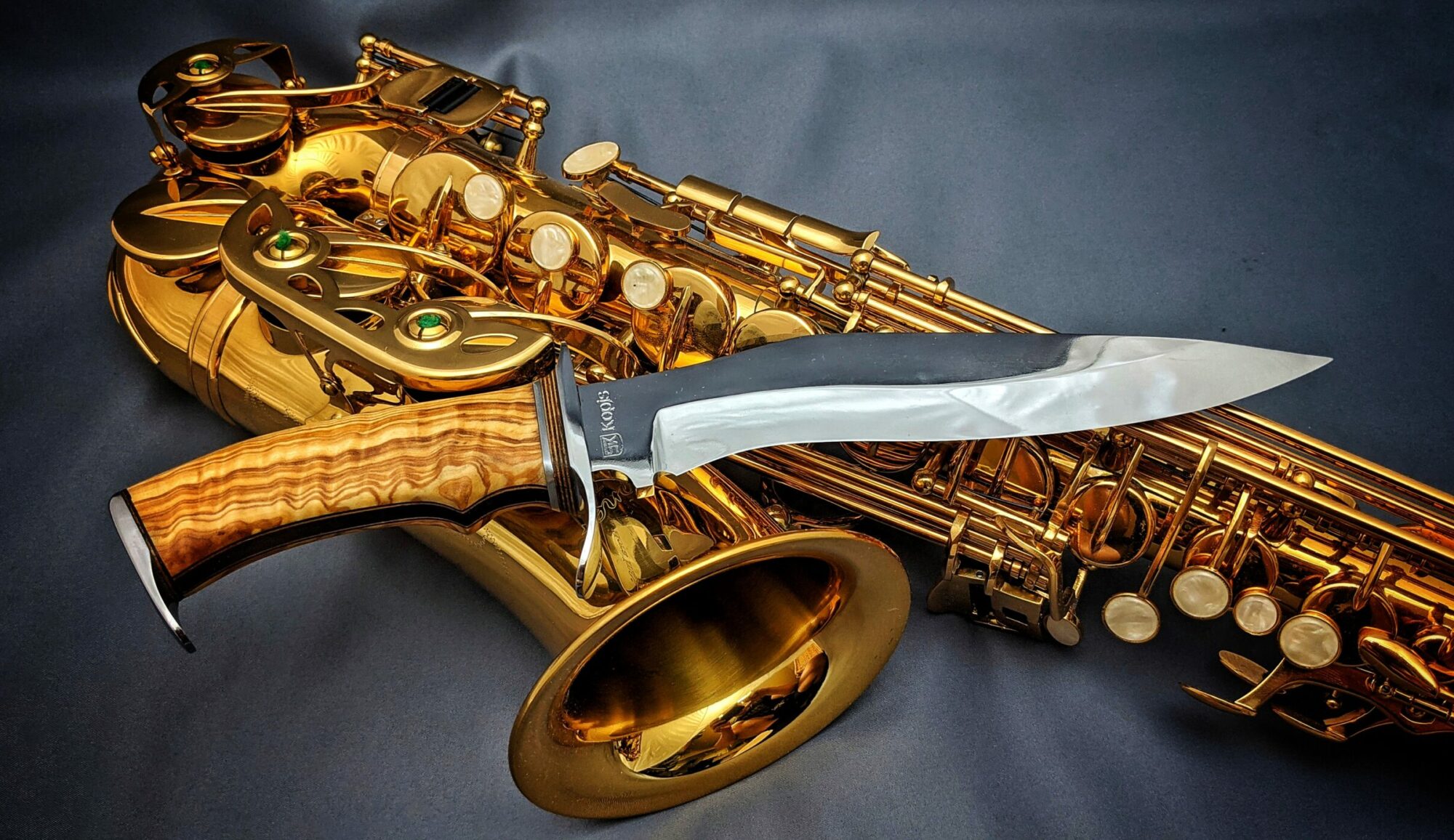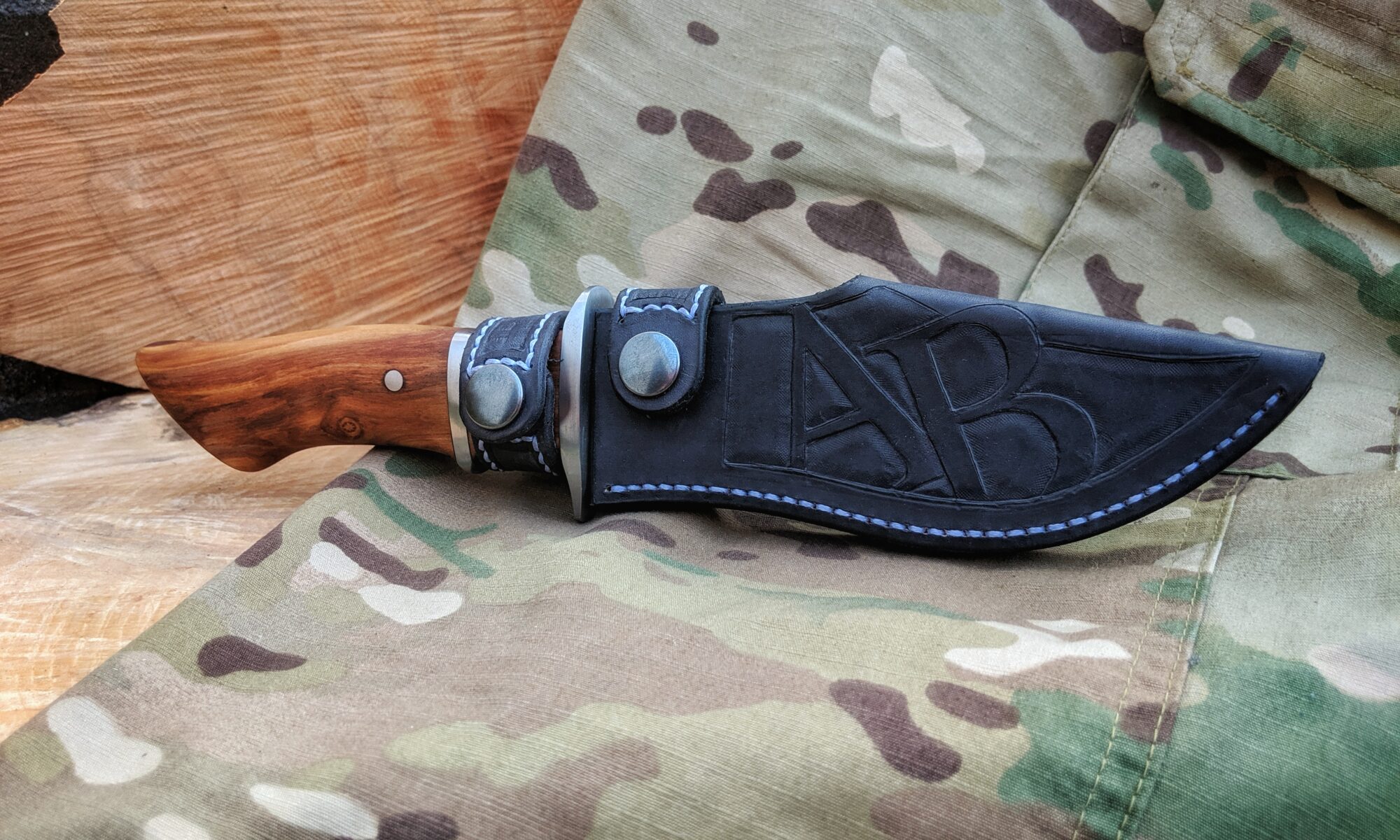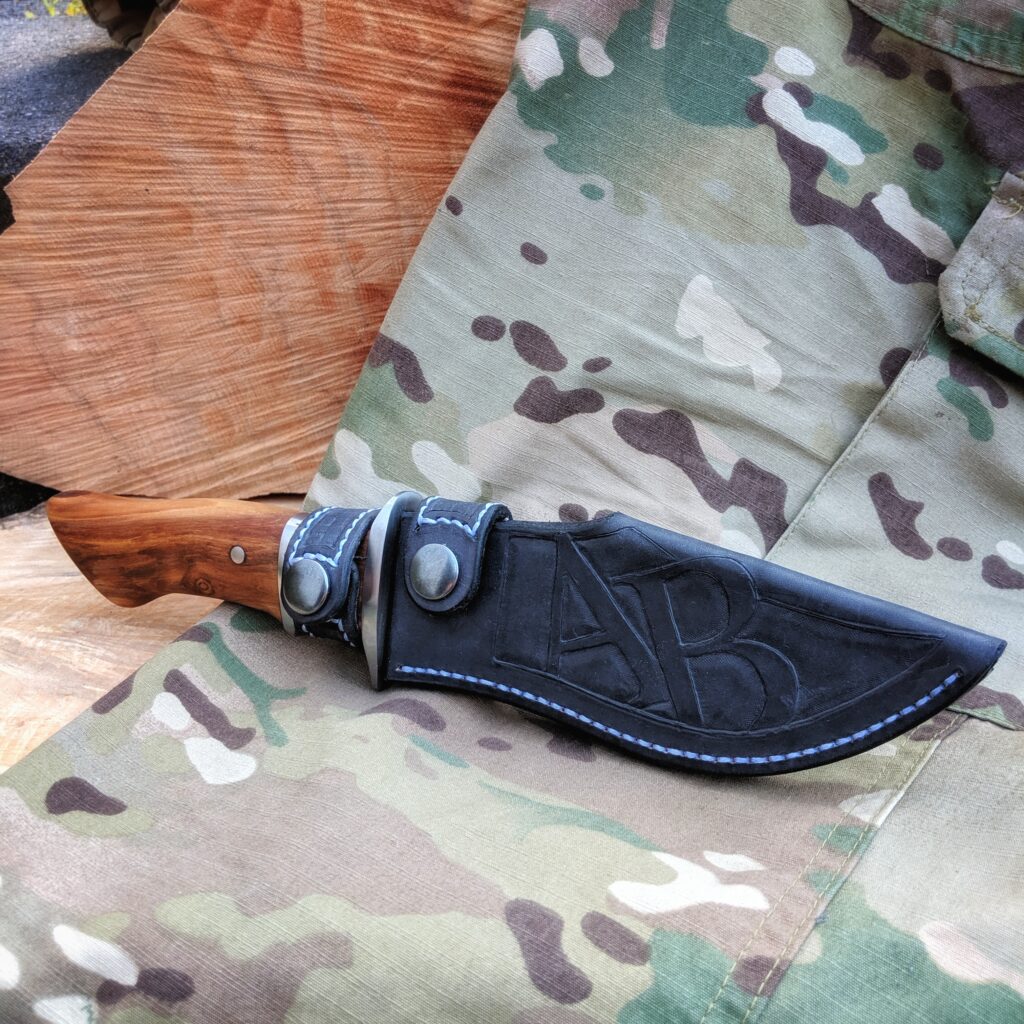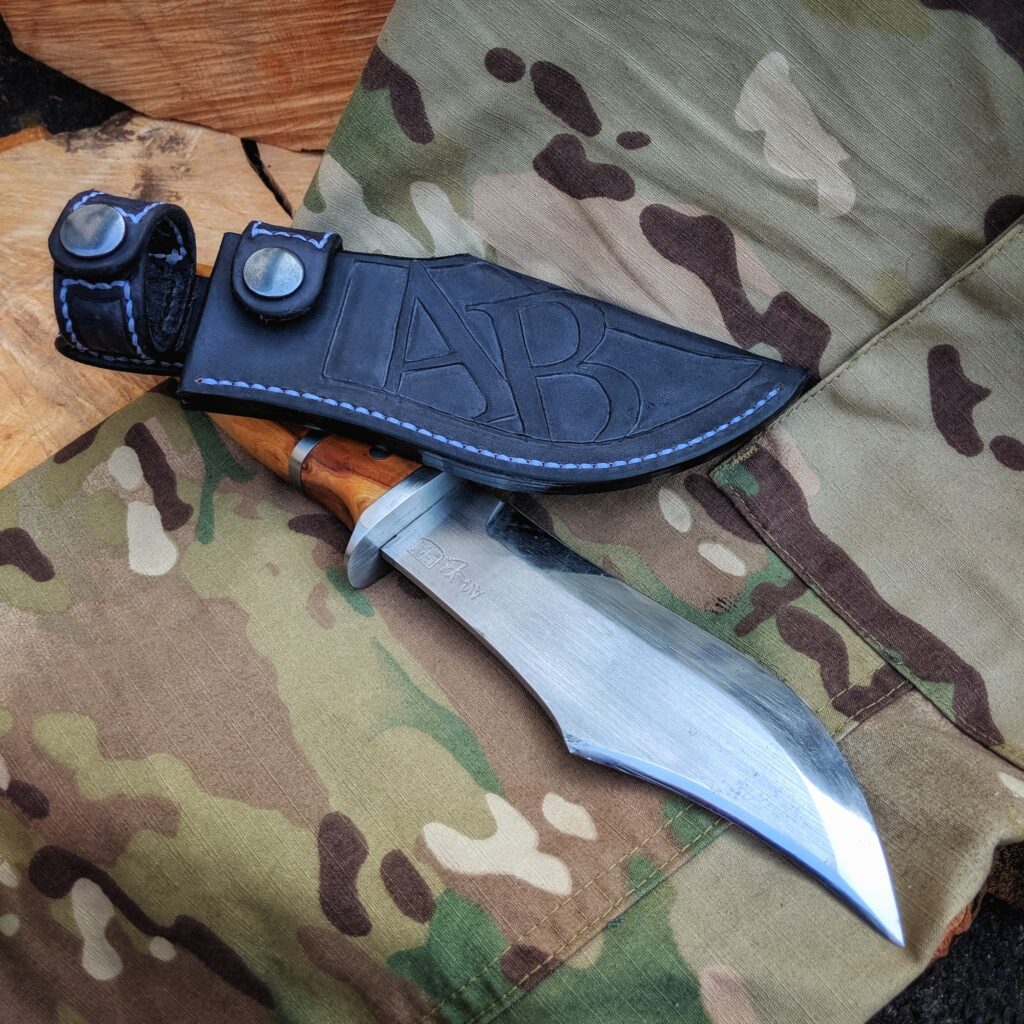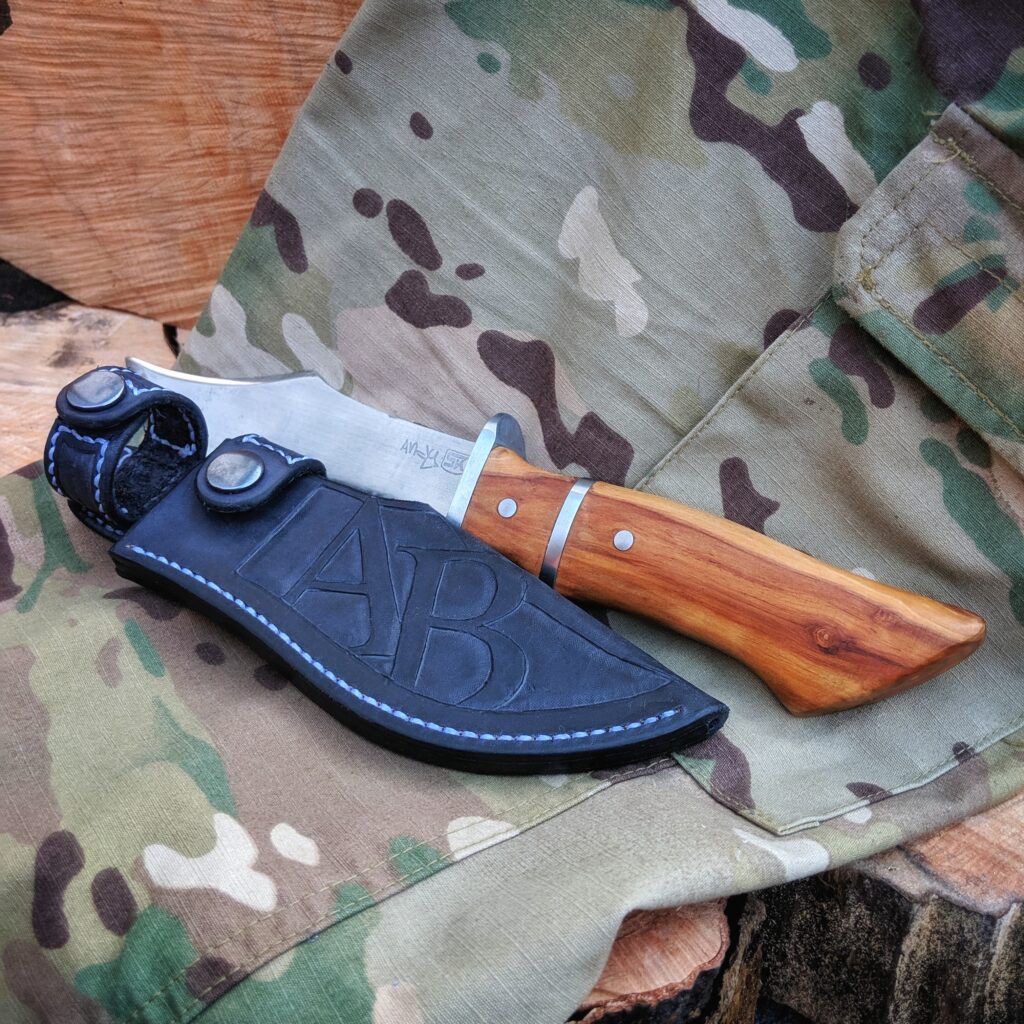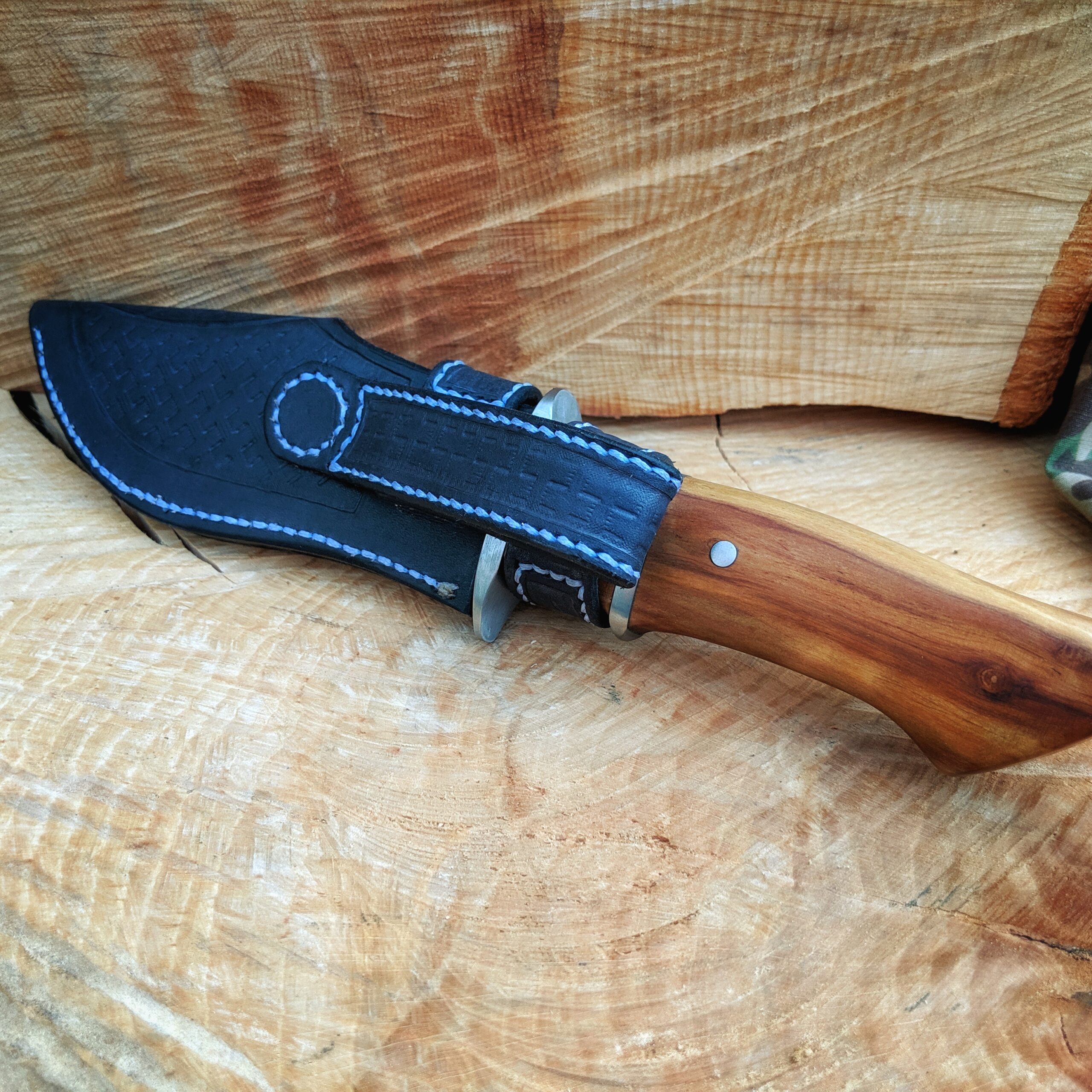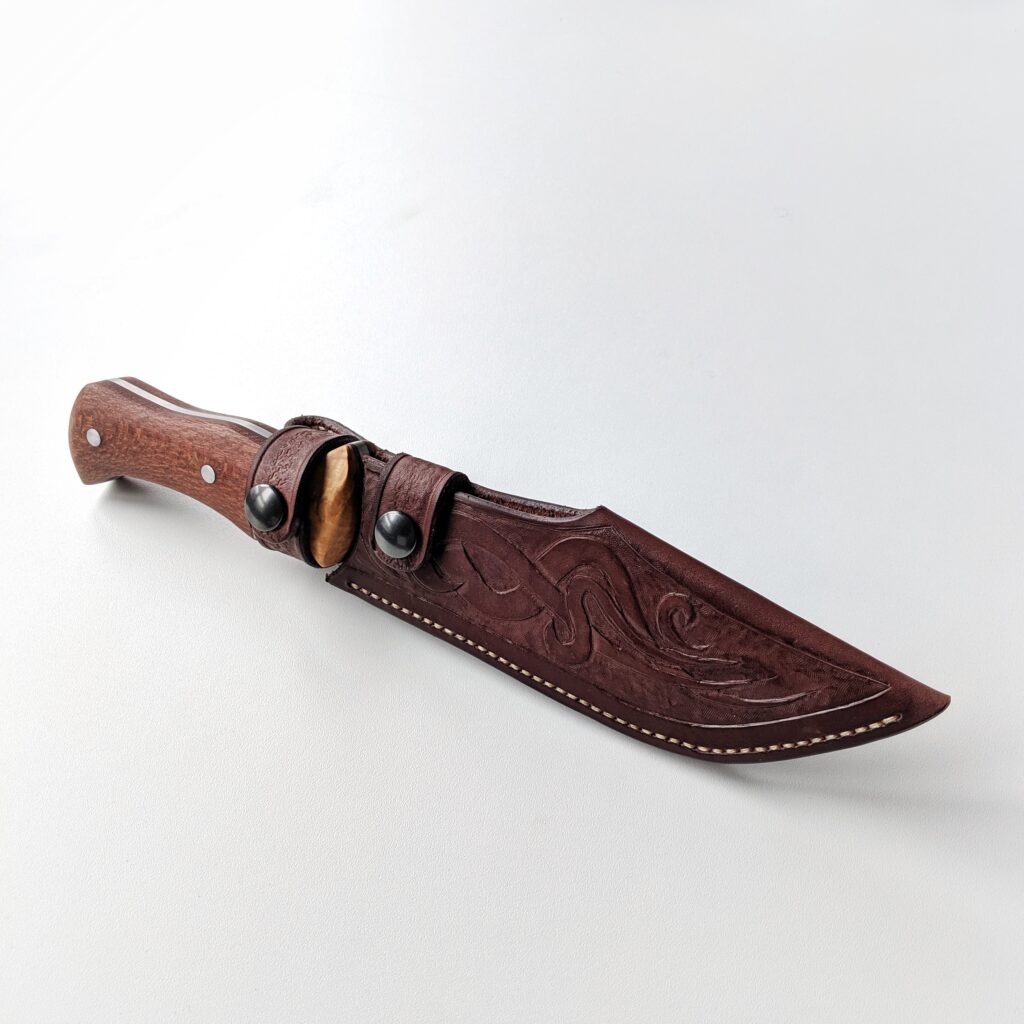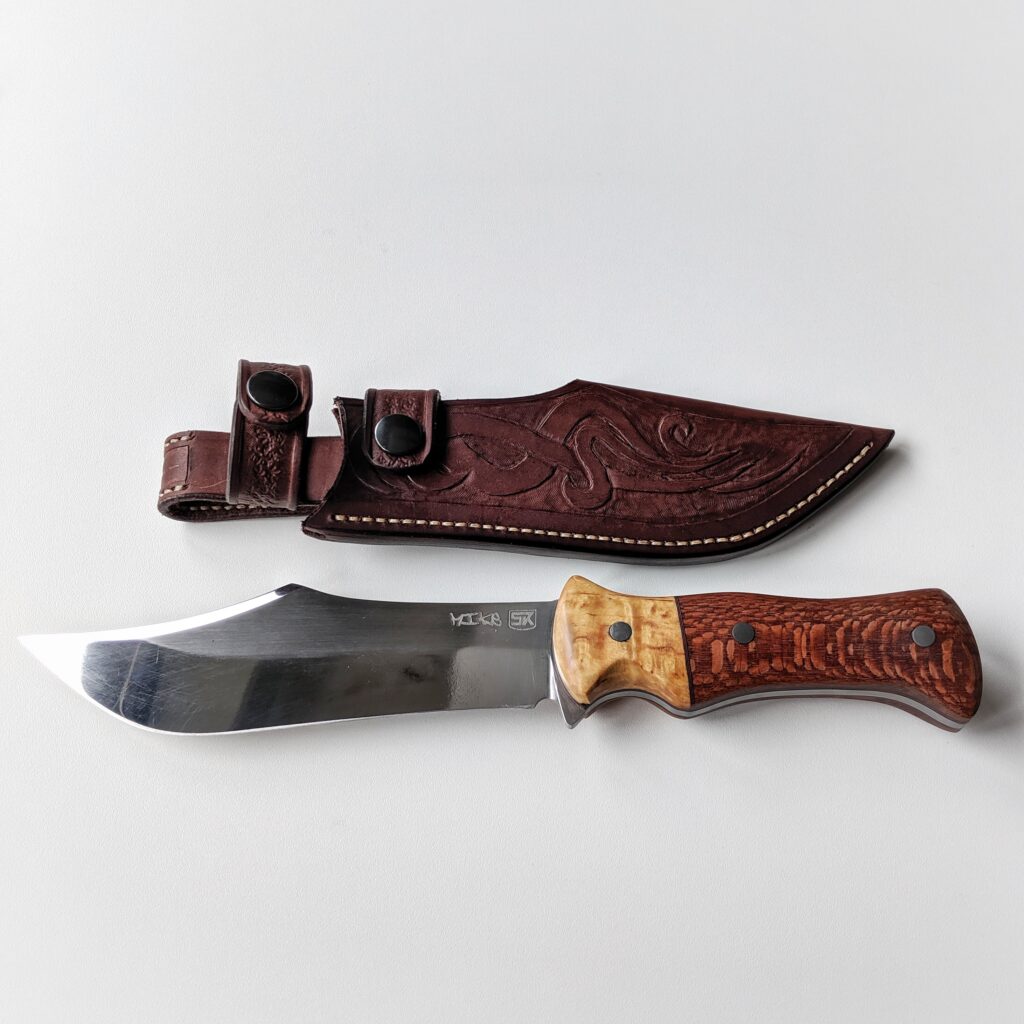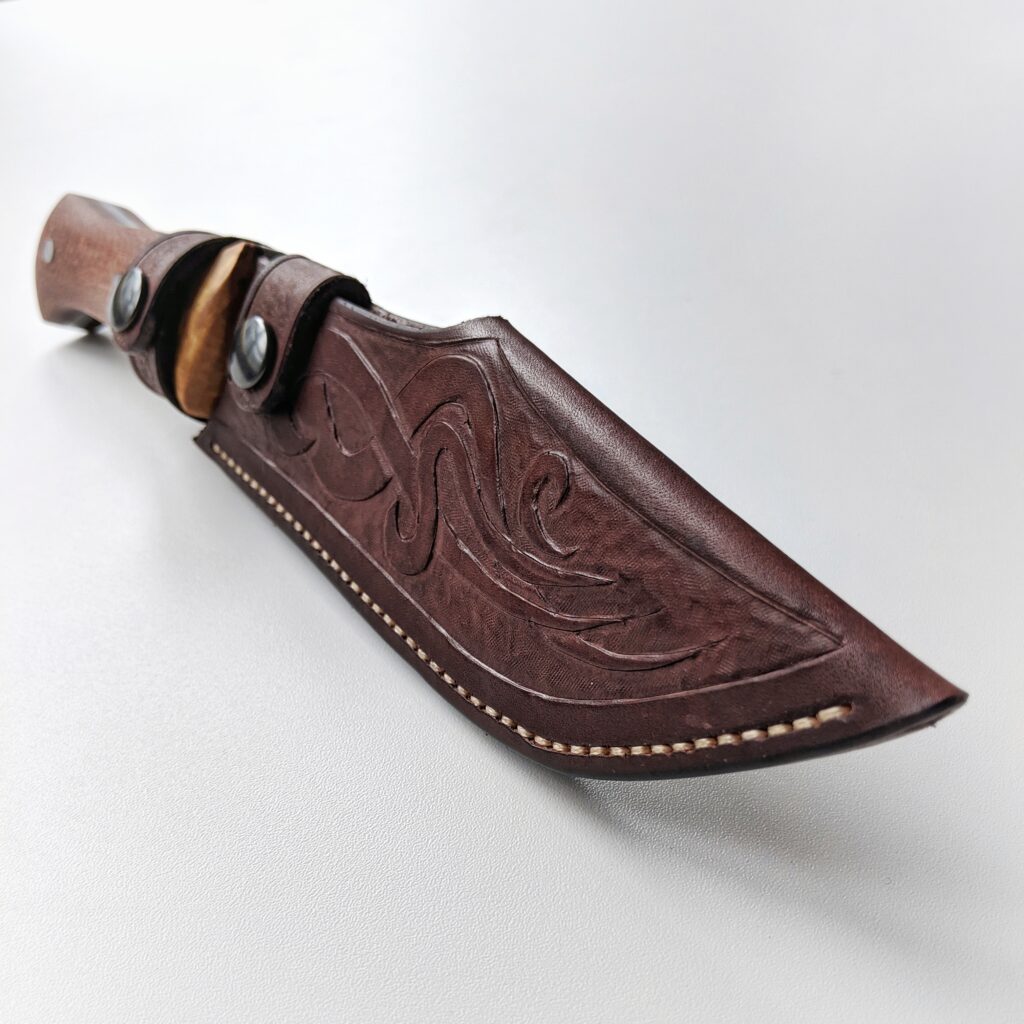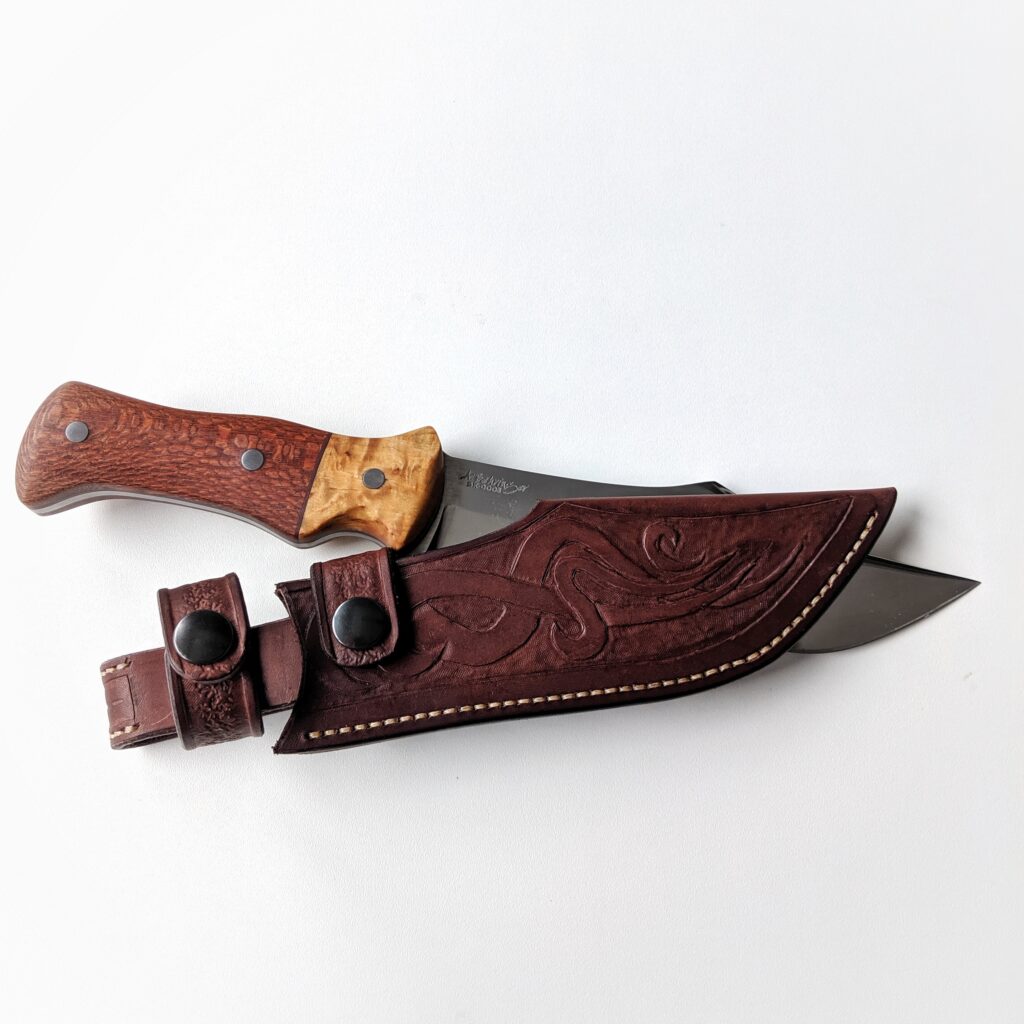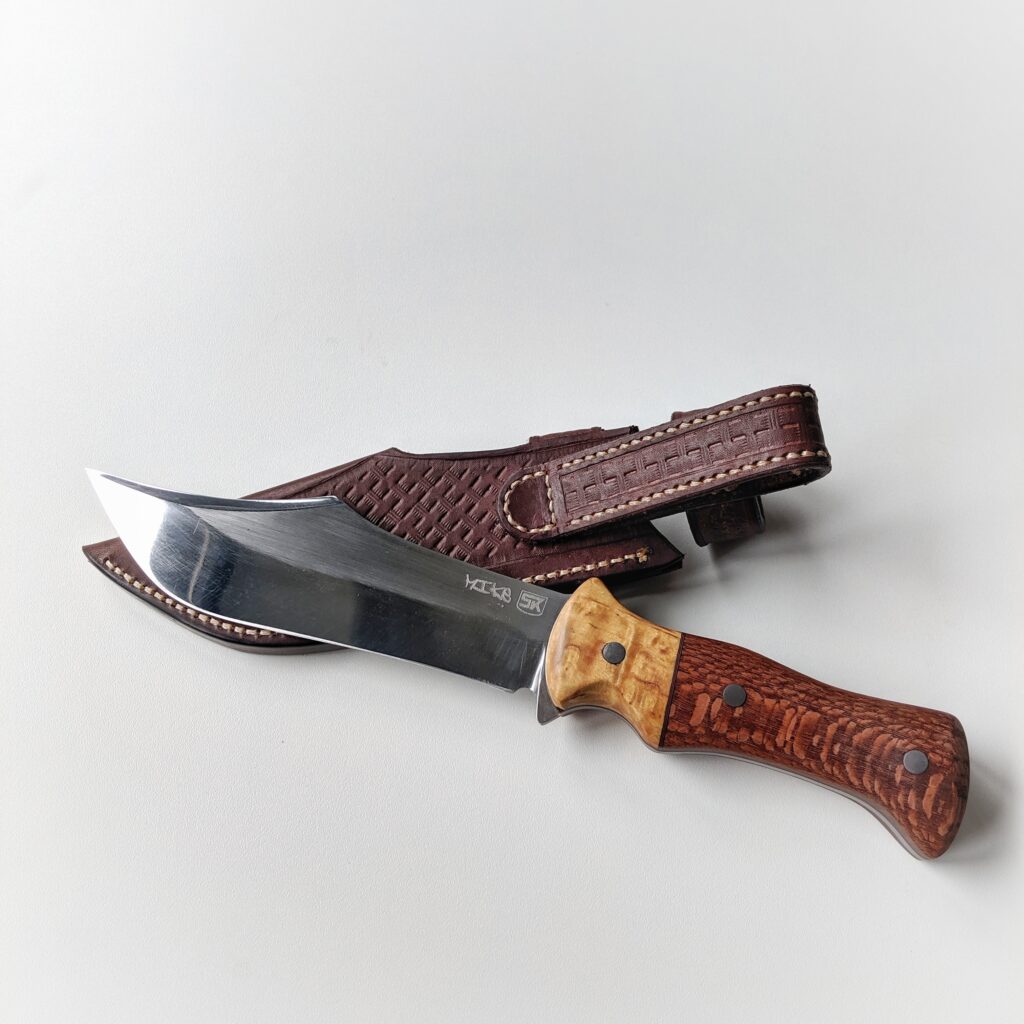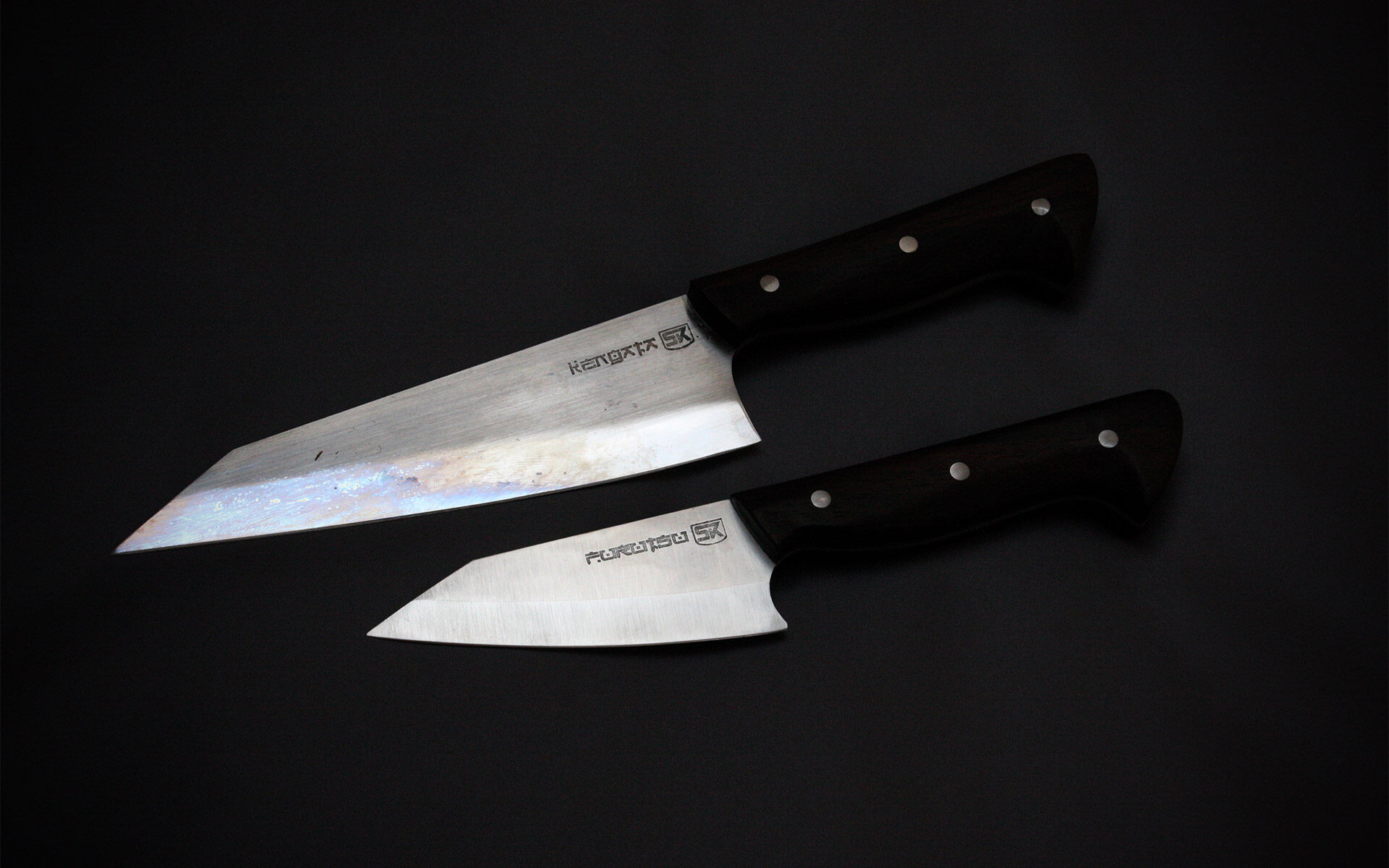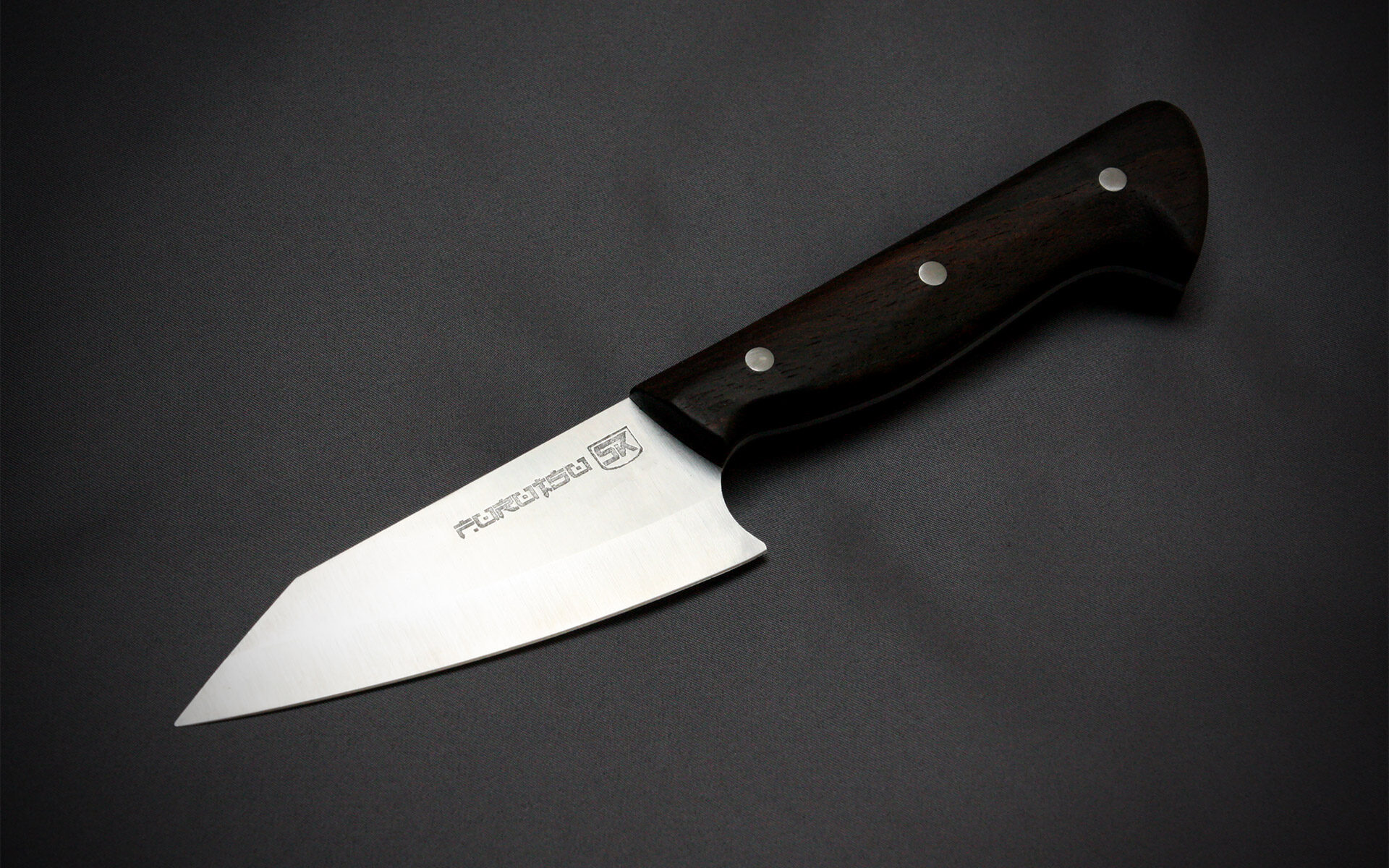After doing all the leatherwork for the knives of my friends and family and having my Bowie Knife on my table in front of me I felt it was about time to do something for my knife too.
These projects I do for myself are the best chance to try out more things and take higher risks just because if I fail it is just my decision if I am happy with the result anyway or if I have to start over and have all the time for doing so.
I don’t want to dive too deep in the steps of making the sheath, as they are the same as on the other knives before. Most complicated about this type of sheaths I make is the order of the steps – when to dye, when to stitch what, when to glue and when to polish. I lately got a routine so I do not have to overthink the whole process every time.
I wanted to try out doing some leather carving where precision really counts just to check the limits. As this would be a sheath for my knife I chose my initials “AB” for the front and some leather punches for the back.
The biggest failure on this project was, that the secondary strap, that closes the open part of the sheath at the spine of the blade, was on the wrong side of the body of the sheath. I just made a mistake while designing the form and cutting it out mirrored. I have made a virtue of necessity and cut it off in favor of a separate strap that I sewed on the back of the sheath together with the belt loop.
As I said on the last post about the sheath for the knife of my brother I liked the result of the decorative stitching and on this new project wanted to take it a step further. I lined every strap and the belt loop with a stitching line that only serves for decorative purposes. What I also wanted to try was using a really white thread to put more contrast on the sheath between the black dye and white stitching. And yes I wanted to dye the sheath black like on the Kukri III.
